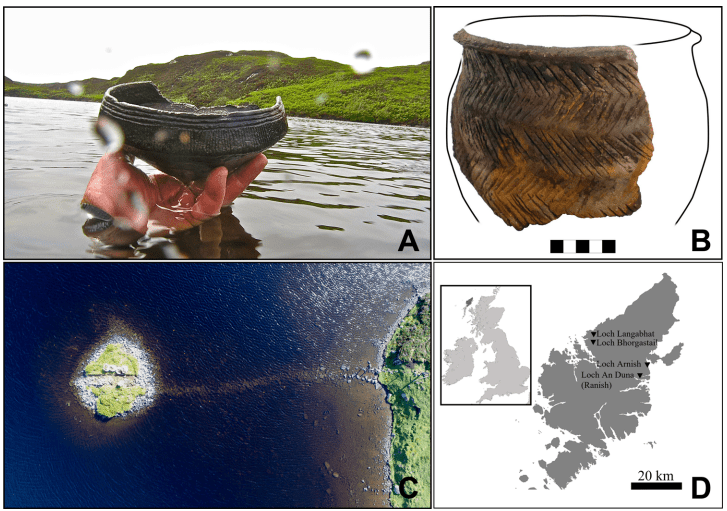Over 10,000 years ago, humans started domesticating the first animals (sheep) for food. Roughly around the same time, the first plants were also domesticated. This decision ended up shaping humanity and paved the way for human civilization to become what it is today. But when and how exactly this domestication spread across the world is still not clear.
To get a better look at what people ate in the Neolithic, archaeologists look for ancient signs like seeds or chemical residue that would indicate that people grew domesticated plants and animals — but while such signs have been found in Britain dating to 6,000 years ago, researchers found no clues of consumption of these products. Until now, that is.
Researchers led by Simon Hammann from the University of Erlangen-Nuremberg analyzed pottery remains from a group of Scottish Isles called the Outer Hebrides. Not only did they find evidence that Neolithic Britons consumed wheat and dairy between 3600 BC and 3300 BC — but they consumed them together, in what researchers believe was either a type of soup or a milk-based porridge.

reconstruction of a ridged baggy jar from Loch Langabhat (B), aerial view of the islet of Loch Bhorgastail and its associated causeway (C) and map of the Isle of Lewis in the Outer Hebrides showing the locations of the four Neolithic crannogs investigated in this study (D).
Neolithic porridge
The pottery was found in Scottish crannogs — artificial islands usually built in lakes and estuarine waters of Scotland. The researchers analyzed 59 shards from a range of different pottery findings, including several types of bowls. Mass spectrometry and gas chromatography were then used to analyze any organic residues found on these pieces.
The study reports molecular biomarkers for cereals and dairy in several pieces, which suggests that the two food groups were prepared or consumed in the same pots, possibly together. This suggests that wheat and other cereals may have been a more important part of these people’s diets than previously expected.
“Our results represent the first direct evidence for the cooking of cereals in Neolithic pots from the 4th millennium BCE, based on specific molecular lipid markers. This demonstrates how our approach based on gas chromatography and high-resolution mass spectrometry can be used for comprehensive screening of lipid extracts,” the researchers note in the study.
The study also suggests that while archaeobotanical records may be lacking, evidence of what people ate thousands of years ago may still be available on pottery pieces.
Unfortunately, we still don’t know what exactly they ate and at what time of day and in what form. We don’t know if it’s exactly the same type of porridge we eat today or something completely different. But we’re one step closer to understanding.
The study was published in Nature.









